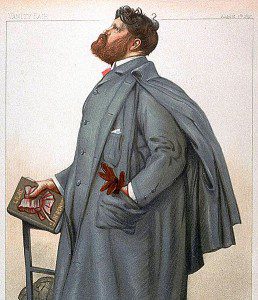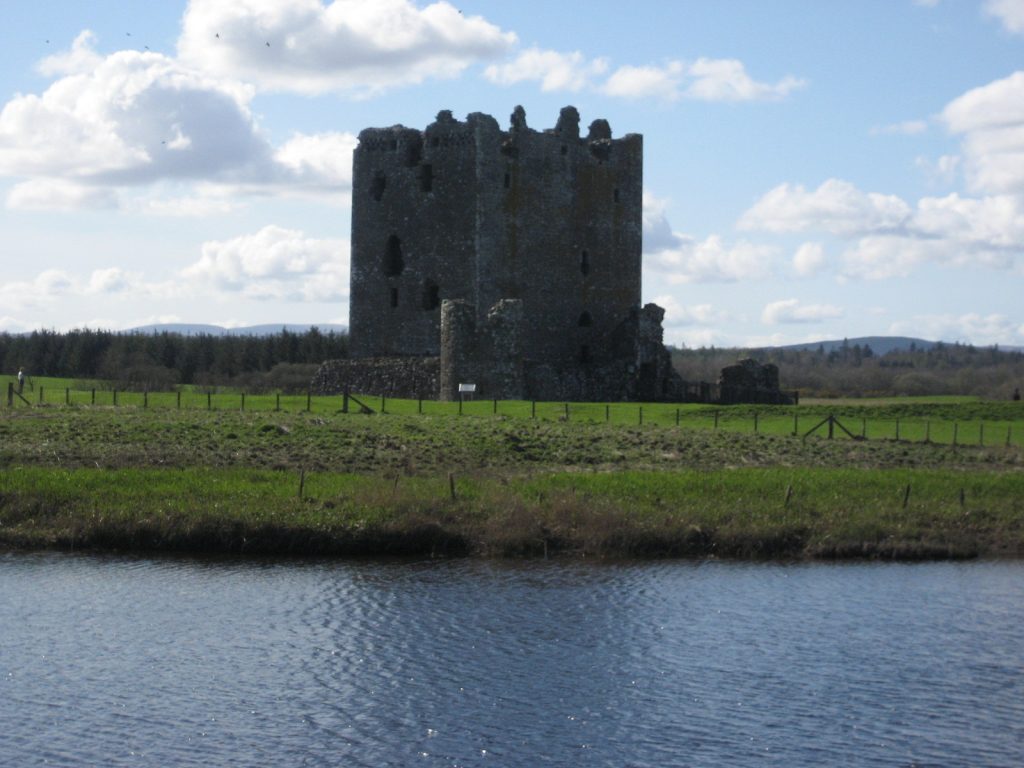November 2014. Beyond ‘The Raiders.’
Cally Phillips
Perhaps best known for his 18th century smuggling novel, ‘The Raiders’ Crockett’s career spanned nearly thirty years, seeing a massive sixty seven books published, including two volumes of poetry, several short ‘essay’ style books, six collections of short stories, seven children’s novels and over forty five novels of varying lengths. Many of the novels were originally published as serials in the periodicals and magazines of the day.
Crockett was one of the new breed of writers in the late 19th century, who came from a journalistic background and wrote both to order and for money. Traditionally, until mass market publishing came about in the mid 19th century, authors were of the gentleman (and woman) class who did not primarily write to earn a living.
 [picture SRCrockett – Vanity Fair]
[picture SRCrockett – Vanity Fair]
Crockett started writing in order to supplement his bursary at University (without which he would never have been able to attend college) and continued throughout his life. He had more than ten years of published articles and stories under his belt before he ‘came good’ and was able to give up the ministry in favour of a full time career as an author. He was represented by A.P.Watt, the original literary agent, who placed his work and largely managed his career. Crockett wrote for ‘the market’ as required but managed to retain his individual voice and unique style throughout his career. And he wrote about his native Galloway as often as possible.
Crockett covers some five hundred years of Galloway history in his writing. Starting with the Medieval novels ‘The Black Douglas’ (1899) and its sequel ‘Maid Margaret’ (1905) he explores the world of medieval Threave (then Thrieve) and the surrounding area. These stories are a must for anyone interested in Threave Castle. Offering a fictionalised version of events in the castle of Archibald the Grim in the fifteenth century, they suggest a quite different view of the Douglas clan from that generally portrayed in Scottish history. Crockett sets the historical characters as background to his ‘ordinary’ heroes and heroines. The adventure has Gothic overtones at times, delving into the supernatural, yet is also romantic and always retains the sense of place, with the description of the castle and its surrounding land firmly to the fore.
 [picture Wigtown martyrs stake]
[picture Wigtown martyrs stake]
In his 17th century Covenating stories, Crockett delivers the cut and thrust of the Musketeer style novel. Once again his ‘ordinary’ heroes and heroines foreground the historical action, making the stories exciting and fast paced; you learn about the Covenanting history almost by osmosis. ‘Men of the Moss Hags’ (1895) and its sequel ‘Lochinvar’ (1897) are the best known, telling the stories of cousins Will and Wat Gordon. These novels easily hold their place with the best of Dumas, and once the episodic style is mastered, offer a great read for anyone who likes an adventure story. ‘The Standard Bearer’ (1898) is much more than a fictionalised story of John MacMillan, minister of Balmaghie while ‘The Cherry Ribband’ (1905) tells the story of Peden the Prophet from the context of an adventure romance, featuring red coated dragoons and fighting all the way. It ranges from the wilds of Galloway to the Bass Rock and the East Lothian coastline. The early, short and extremely weird ‘Mad Sir Uchtred of the Hills’ (1894) gives Covenanting times a gothic makeover and was one of Crockett’s earliest published stories, presaging the eclecticism and variety in his writing. By contrast, his last novel, published on the day of his death ‘Silver Sand’ (1914) takes the well loved and familiar character from ‘The Raiders’ and tells the story of his youth in ‘The Killing Times.’
The 18th Century novels, of which ‘The Raiders’ is the best known include its sequel ‘The Dark o’ the Moon,’ (1902) set during the Galloway Levellers Rebellion of 1724. Once again Crockett takes an overlooked historic event and gives it life through fictional characters, most notably one of his finest villains, the gypsy Hector Farr. ‘The Dew of Their Youth,’ (1909) is reminiscent of Stevenson’s ‘Kidnapped’ with Duncan MacAlpine bearing a more than passing resemblance to David Balfour, but he’s given a Galloway twist through and through. The 18th century novels range through Galloway from wild hills to the smuggling coast. There are other novels of smuggling and free-trading set in this period, all rattling good reads.
The majority of Crockett’s Galloway novels are set in the 19th century, ranging from mid century right up to what were contemporary times for Crockett. Many of them see him looking back to his own childhood days, growing up at Little Duchrae (which he re-sites as variously Black Dornal, Craig Ronald and Drumquhat) and Castle Douglas (which he fictionalises as Cairn Edward). For anyone with an interest in life in rural Galloway in the 19th century, these novels are a treasure trove. They offer not only great stories but also are packed with the kind of detail that can only be found from a writer who writes primarily from experience. In the semi-autobiographical children’s novel ‘Rogue’s Island’ published posthumously in 1926, Crockett wrote: ‘I say, ‘Remember a thing… exactly mind you… thirty or forty years and you will find a place expressly hollowed out for it where it will grow and branch out and seed like a potted plant.’
Out of print for many years, nearly half of Crockett’s work has been republished this year as The Galloway Collection, allowing you to discover them for yourself either in ebook or paperback format. And to find out more about Crockett and his work, you can join The Galloway Raiders for free. This online literary society offers information, features, articles and special discounts on his work and is the place to start your journey of discovering the Galloway of S.R. Crockett.
Next month: ‘A Cameronian Christmas.’








